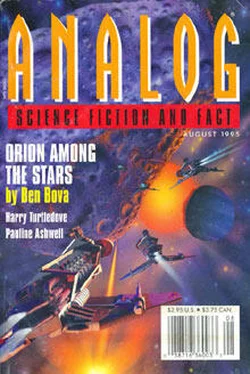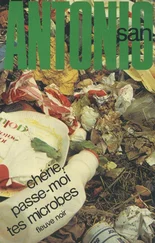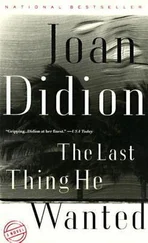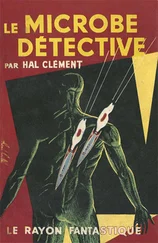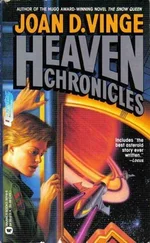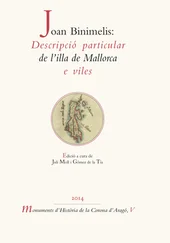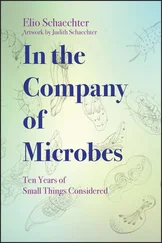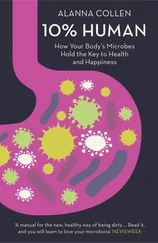Joan Slonczewski - Microbe
Здесь есть возможность читать онлайн «Joan Slonczewski - Microbe» весь текст электронной книги совершенно бесплатно (целиком полную версию без сокращений). В некоторых случаях можно слушать аудио, скачать через торрент в формате fb2 и присутствует краткое содержание. Год выпуска: 1995, Жанр: Фантастика и фэнтези, на английском языке. Описание произведения, (предисловие) а так же отзывы посетителей доступны на портале библиотеки ЛибКат.
- Название:Microbe
- Автор:
- Жанр:
- Год:1995
- ISBN:нет данных
- Рейтинг книги:4 / 5. Голосов: 1
-
Избранное:Добавить в избранное
- Отзывы:
-
Ваша оценка:
- 80
- 1
- 2
- 3
- 4
- 5
Microbe: краткое содержание, описание и аннотация
Предлагаем к чтению аннотацию, описание, краткое содержание или предисловие (зависит от того, что написал сам автор книги «Microbe»). Если вы не нашли необходимую информацию о книге — напишите в комментариях, мы постараемся отыскать её.
Microbe — читать онлайн бесплатно полную книгу (весь текст) целиком
Ниже представлен текст книги, разбитый по страницам. Система сохранения места последней прочитанной страницы, позволяет с удобством читать онлайн бесплатно книгу «Microbe», без необходимости каждый раз заново искать на чём Вы остановились. Поставьте закладку, и сможете в любой момент перейти на страницу, на которой закончили чтение.
Интервал:
Закладка:
Microbe
by Joan Slonczewski


Illustrations by George H. Krauter
“That rat didn’t die.” Andra walked around the holostage. Before her, projected down from the geodesic dome, the planet’s image shone: Iota Pavonis Three, the first new world approved for settlement in over four centuries. As Andra walked around, the brown swirl of a mysterious continent peered out through a swathe of cloud. She stopped, leaning forward on her elbows to watch. What name of its own would the Free Fold Federation ultimately bestow on IP3, Andra wondered; such a lovely, terrifying world.
“Not the last time, the rat didn’t.” The eye speaker was perched on her shoulder. It belonged to Skyhook, the sentient shuttle craft that would soon carry Andra from the study station down to land on the new world. A reasonable arrangement: The shuttle craft would carry the human xenobiologist through space for her field work, then she would carry his eye on the planet surface, as she did inside the station. “The rat only died down there the first eight times.”
“Until we got its ‘skin’ right.” The “skin” was a suit of nanoplast, containing billions of microscopic computers, designed to filter out all the local toxins—arsenic, lanthanides, bizarre pseudoalkaloids. All were found in local flora and fauna; inhaling them would kill a human within hours. In the old days, planets had been terra-formed for human life, like Andra’s own home world Valedon. Today they would call that ecocide. Instead, millions of humans would be lifeshaped to live here on planet IP3, farming and building—the thought of it made her blood race.
“We got the right skin for the rat,” Skyhook’s eye speaker pointed out. “But you’re not exactly a rat.”
From across the holostage, an amorphous blob of nanoplast raised a pseudopod. “Not exactly a rat,” came a voice from the nanoplast. It was the voice of Pelt, the skinsuit that would protect Andra on the alien planet surface. “Not exactly a rat—just about nine-tenths, I’d say. Your cell physiology is practically the same as a rat; why, you could even take organ grafts. Only a few developmental genes make the difference.”
Andra smiled. “Thank the Spirit for a few genes. Life would be so much less interesting.”
Pelt’s pseudopod wiggled. “The rat lived, and so will you. But our nanoservos completely jammed.” The microscopic nanoservos had swarmed into sample life forms from IP3 to test their chemical structure. But for some reason they could barely begin to send back data before they broke down. “Nobody cares about them.”
“Of course we care,” Andra said quickly. Pelt never let anyone value human life above that of sentient machines. “That’s why we cut short the analysis, until we can bring samples back to the station. That’s why we’re sending me .”
“Us,” he corrected.
“All right, enough already,” said Skyhook. “Why don’t we review our data one last time?”
“Very well.” A third sentient voice boomed out of the hexagonal panel in the dome directly overhead. It was the explorer station herself, Quantum. Quantum considered herself female, the others male; Andra could never tell why, although sentients would laugh at any human who could not tell the difference. “Here are some microbial cells extracted from the soil by the last probe,” said Quantum.
The planet’s image dissolved. In its place appeared the highly magnified shapes of the microbes. The cells were round and somewhat flattened, rather like red blood cells. But if one looked closer, one could see that each flattened cell was actually pinched in straight through like a bagel.
“The toroid cell shape has never been observed on other planets,” said Quantum. “Otherwise, the cell’s structure is simple. No nuclear membranes surround the chromosomes; so, these cells are like bacteria, prokaryotes.”
Skyhook said, “The chromosome might be circular, too, as in bacteria.”
“Who knows?” said Pelt. “On Italian, all the chromosomes are branched. It took us decades to do genetics there.”
“We just don’t know yet,” said Quantum. “All we know is, the cells contain DNA.”
“The usual double helix?” asked Skyhook. The double helix is a ladder of DNA nucleotide pairs, always adenine with thymine or guanine with cytosine, for the four different “letters” of the DNA code. When a cell divides to make two cells, the entire helix unzips, then fills in a complementary strand for each daughter cell.
“The nanoservos failed before they could tell for sure. But it does have all four nucleotides.”
Andra watched the magnified microbes as their images grew, their ring shapes filling out like bagel dough rising. “I’ll bet their chromosomes run right around the hole.”
At her shoulder Skyhook’s eye speaker laughed. “That would be a neat trick.”
Quantum added, “We identified fifteen amino acids in its proteins, including the usual six.” All living things have evolved to use six amino acids in common, the ones that form during the birth of planets. “But three of the others are toxic—”
“Look,” exclaimed Andra. “The cell is starting to divide.” One of the bulging toroids had begun to pucker in, all along its circumference. The puckered line deepened into a furrow all the way around the cell. Along the inside of the “hole,” a second furrow deepened, eventually to meet the furrow from the outer rim.
“So that’s how the cell divides,” said Skyhook. “Not by pinching in across the hole; instead it slices through.”
“The better to toast it.”
At that Pelt’s pseudopod made a rude gesture. “Pinching the hole in wouldn’t make sense, if your chromosomes encircles the hole; you’d pinch off half of it.”
Andra squinted and leaned forward on her elbows. “I say—that cell has three division furrows.”
“The daughter cells are dividing again already?” Skyhook suggested.
“No, it’s a third furrow in the same generation. All three furrows are meeting up in the middle.”
“That’s right,” boomed Quantum’s voice. “These cells divide in three, not two,” she explained. “Three daughter cells in each generation.”
Sure enough, the three daughter cells appeared, filling themselves out as they separated. Other cells too had puckered in by now, at various stages of division, and all made their daughters in triplets. “How would they divide their chromosomes to make three?” Andra wondered. “They must copy each DNA helix twice before dividing. Why would that have evolved?”
“Never mind the DNA,” said Pelt. “It’s those toxic amino acids you should worry about.”
“Not with you protecting me. The rat survived.”
Quantum said, “We’ve discussed every relevant point. We’ve established, based on all available data, that Andra’s chance of survival approaches 100 percent.”
“Uncertainties remain,” Skyhook cautioned.
Andra stood back and spread her hands. “Of course we need more data—that’s why we’re going down.”
“All right,” said Skyhook. “Let’s go”
“I’m ready.” Pelt’s pseudopod dissolved, and the nanoplast formed a perfect hemisphere.
Andra unhooked Skyhook’s eye speaker from her shoulder. Then she walked back around the holostage to lift the hemisphere of Pelt onto her head. Pelt’s nanoplast began to melt slowly down over her black curls, leaving a thin transparent film of nanoprocessors covering her hair, her dark skin, and her black eyes. It formed a special breather over her nose and mouth. Everywhere the nanoplast would filter the air that reached her skin, keeping planetary dust out while letting oxygen through. The film covered the necklace of pink andradites around her neck, spreading down her shirt and trousers. She lifted each foot in turn to allow the complete enclosure. Now she would be safe from any chemical hazard she might encounter.
Читать дальшеИнтервал:
Закладка:
Похожие книги на «Microbe»
Представляем Вашему вниманию похожие книги на «Microbe» списком для выбора. Мы отобрали схожую по названию и смыслу литературу в надежде предоставить читателям больше вариантов отыскать новые, интересные, ещё непрочитанные произведения.
Обсуждение, отзывы о книге «Microbe» и просто собственные мнения читателей. Оставьте ваши комментарии, напишите, что Вы думаете о произведении, его смысле или главных героях. Укажите что конкретно понравилось, а что нет, и почему Вы так считаете.
